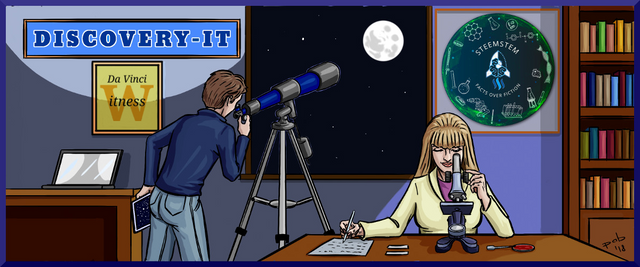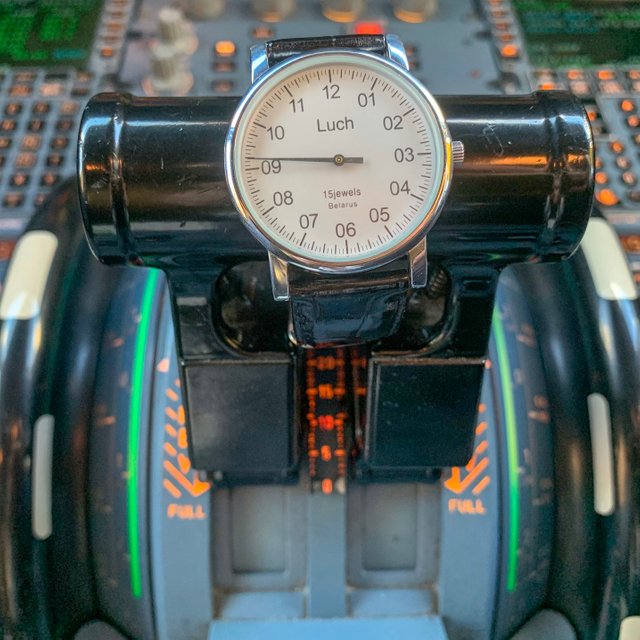How to lower airlines boarding time - Come abbassare i tempi di imbarco degli aeromobili [EN/ITA]
 |  |
|---|---|
| I spend a lot of time sitting on a plane waiting for the end of the boarding procedure. Passengers looking for space in the overhead compartments, missing their seats and trying to do their best to stow enormous bags in small places like under the seats, sometimes screaming and complaining against flight attendants and the company. My target is to get the wheels off the ground on time and nothing more. Please forget for now the fact I'm the pilot because I'm sure you too don't want to waste Your time in this almost ridiculous situation. I'm writing this article to explain what I even don't understand: how airlines are so scared to adopt efficient working methods. Some companies like Boeing noted that, in the last 40 years, airliners boarding times increased by roughly 50%. This can sounds perfectly normal since in the last few decades airlines started to apply fees for registered luggage (the one that goes in the cargo compartment) and more carry-on luggage (the other one that goes with the passenger) is the main problem inside modern overhead compartments. | Passo davvero molto tempo seduto su un aereo ad aspettare che si concludano le procedure di imbarco. Passeggeri che cercano spazio nelle cappelliere sbagliando il posto assegnato, tentativi di stivare bagagli abnormi in spazi angusti come sotto il sedile e generalmente imprecando contro gli assistenti di volo e la compagnia. Il mio obiettivo è sempre quello di staccare le ruote da terra in orario. Dimenticatevi per un attimo il fatto che sono il pilota anche perchè sono sicuro anche voi avreste di meglio da fare che perdere il vostro tempo in una situazione quasi ridicola come questa. Scrivo questo articolo principalmente per far capire come le compagnie aeree siano dotate di uno strano sentimento contrario ad ogni forma di organizzazione efficiente. Alcune aziende come Boeing hanno fatto notare che negli ultimi 40 anni i tempi di imbarco degli aerei di linea sono aumentati di circa il 50%. Questo sembra piuttosto comprensibile in quanto nelle ultime decadi le compagnie aeree hanno iniziato ad esigere dei costi extra per il bagaglio da stiva, aumentando a dismisura la quantità di bagagli a mano che viene imbarcata sui voli. |
| Almost everyone can figure out some good methods to load a jetliner, surely better than the few actually used (and abused). There is even some research explaining very well how to speed up boarding operations and, as usual, airliners are not at all following the scientific method persisting in using the least efficient way to board passengers on airplanes. Generally speaking they (with a few remarkable exceptions) boards business class first and then families with children: when this is done the rest of the world is embarked generally in blocks (groups) from the back to the front of the plane. This "block" method is the worst way to proceed when loading an aircraft. Note that even the "random" seating procedure (this means all passengers in no particular order are let inside since they find their seats) is more efficient than the "block" but it is a little tricky when balancing the plane if it is not fully booked so it is not the standard in modern aviation. If the company does not embark the first class or families in advance but all the passenger in a back-to-front fashion the procedure can be described as pure "back-to-front" boarding: still very time wasting, since it can eventually be efficient when filling a jar with candies but it does not apply well to modern jetliners . The key idea to speed up all the processes is to reduce and possibly eliminate two of the most time wasting problems during boarding: aisle and seat interference (two or more passengers block the aisle or the seat row because they are too close and they can't move easily). The carry on luggage and its storage is the other main time wasting phenomena in the interference process so it is of great importance to reduce this occurrence. A really good method to board can be the WilMA - Window seat first, then Middle and Aisle, eliminating or greatly reducing all the interferences. Almost every airlines will tell that such a method does not permit to accomodate families in adjacent seats but the reality is that a simple preliminary boarding for them - like the one (blocks method) that they are actually performing - can solve the situation. The best (and most difficult) way to board actually know is the one created by dr. Steffen, a Fermilab Physicist, using an algorithm that permits to eliminate the interference at all levels - aisle and seats -: in his paper he also experimented boarding times, using a 72 seats mockup demonstrating that the best method is the Steffen -his one- followed by WilMA, random, back-to-front and blocks. In their TV-show, Mythbusters reconstructed the experiment with similar results. I report finally the average boarding time innseconds per passenger using the systems explained on this article; Steffen: 3.05, WilMA: 3.625, random: 4.0, back-to-front: 5.22, blocks: 5.77. Please, remember that when boarding on Your next flight | Chiunque potrebbe facilmente immaginare un buon metodo di imbarco, sicuramente di molto più efficiente dei pochi attualmente usati (ed abusati). Esiste addirittura una ricerca su come migliorare i tempi di imbarco ma, ancora una volta, le compagnie aeree non sembrano interessarsene persistendo ad utilizzare metodi di imbarco poco efficienti. In linea generale esse tendono ad imbarcare prima la classe superiore, quindi le famiglie con bambini e solo a quel punto il resto dei passeggeri in "blocchi" dai posti in coda verso quelli in prua all' aereo. Questo è uno dei metodi peggiori per caricare i passeggeri: è da rilevare che addirittura un'assegnazione casuale, nella quale i passeggeri scelgano un posto qualsiasi, sia molto più veloce di questa anche se, va detto, poi bilanciare l'aereo quando non è completamente pieno potrebbe essere alquanto faticoso e pertanto non rappresenta assolutamente uno standard nella moderna aviazione. In caso di aeromobili con una singola classe di servizio è possibile che le compagnie utilizzino un semplice metodo "da coda a prua" che è simile alla parte finale del sistema a blocchi precedentemente descritto: questo è comunque molto dispendioso in termini di tempo anche perchè se può funzionare per riempire un vaso di caramelle non è detto che sia altrettanto efficiente su di un aviogetto di linea. L'idea per ridurre i tempi di imbarco consiste fondamentalmente nel ridurre le cosiddette interferenze, ovvero gli eventi in cui due o più passeggeri si ostacolano a vicenda nel corridoio, nella fila di sedili o, peggio, cercando lo spazio per riporre borse e oggetti nelle cappelliere. Un metodo valido di imbarco potrebbe essere invece il WilMA (dall' acronimo inglese di Window, Middle, Aisle ovvero finestrino, intermedio, corridoio) ove i primi passeggeri ammessi nell'aeromobile sono quelli occupanti i posti lato finestrini, quindi le file centrali ed infine quelli lato corridoio, eliminando o riducendo di parecchio tutte le interferenze. Se però provate a chiedere ad una compagnia aerea come mai non usi questo sistema la risposta sarà più meno sempre la stessa e cioè che dividerebbe le famiglie con bambini. Il problema sarebbe comunque risolvibile semplicemente preimbarcandole ma evidentemente questo è troppo complesso da spiegare agli eccezionali creatori di procedure delle aerolinee. In ogni caso esiste un metodo ancora migliore, creato dal dr. Steffen, un fisico del Fermilab: il suo algoritmo permette di eliminare le interferenze ad ogni livello e nella sua dimostrazione effettuata su una maquette dimostra come il suo sia il metodo migliore, seguito dal WilMA, dal random e dai due a blocchi (sia "business class first" sia dalla coda alla prua per classe unica). Riporto i tempi medi di imbarco misurati in secondi per passeggero con i metodi di imbarco qui descritti: Steffen: 3.05, WilMA: 3.625, random: 4.0, da coda a prua: 5.22, blocchi: 5.77 Se non bastasse, in una puntata televisiva, Mythbusters ricostruiscono l'esperimento con risultati analoghi. Ricordatelo quando salirete sul vostro prossimo volo. |
Sources / Fonti:
J. H. Steffen, J. Hotchkiss: Experimental test of airplane boarding methods - Cornell University
Mythbusters - Episode 222: Airplane boarding
Images / Diritti delle immagini: author / autore


Congratulations @omodei! You have completed the following achievement on the Steem blockchain and have been rewarded with new badge(s) :
You can view your badges on your Steem Board and compare to others on the Steem Ranking
If you no longer want to receive notifications, reply to this comment with the word
STOPDo not miss the last post from @steemitboard:
This post has been voted on by the SteemSTEM curation team and voting trail. It is elligible for support from @curie.
If you appreciate the work we are doing, then consider supporting our witness stem.witness. Additional witness support to the curie witness would be appreciated as well.
For additional information please join us on the SteemSTEM discord and to get to know the rest of the community!
Please consider setting @steemstem as a beneficiary to your post to get a stronger support.
Please consider using the steemstem.io app to get a stronger support.